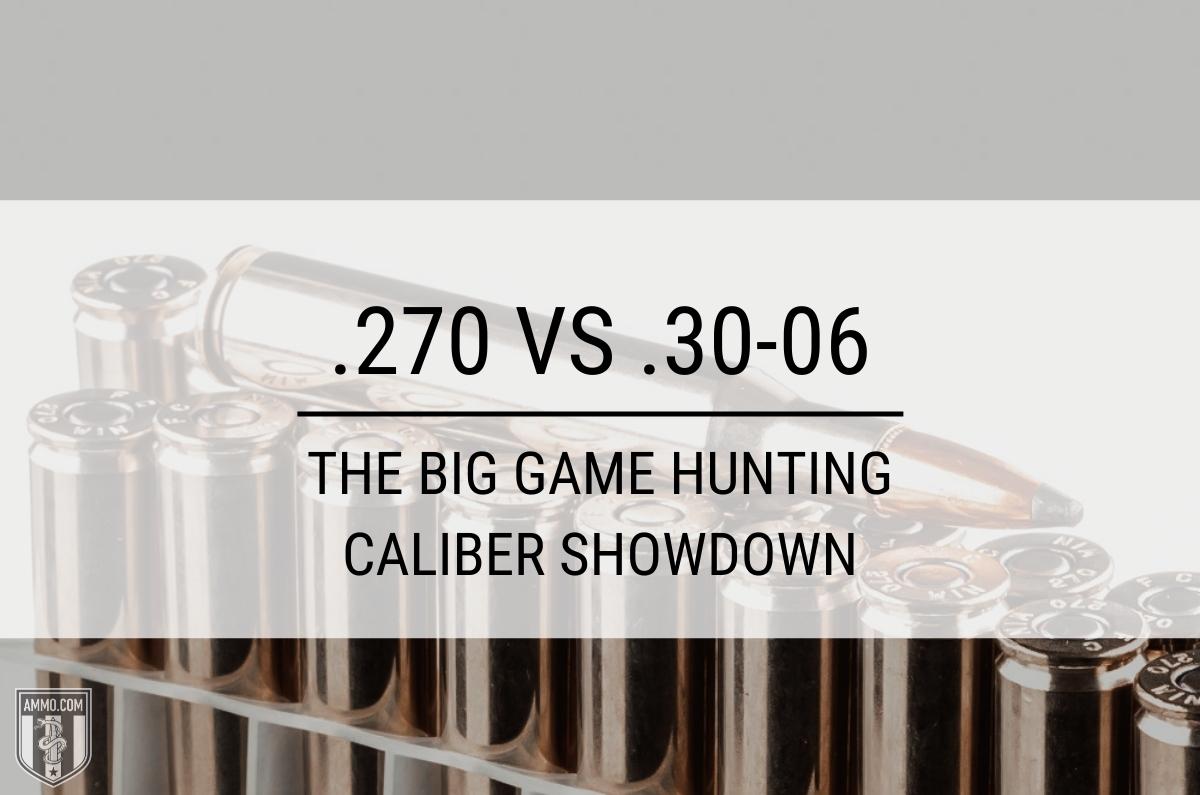 When it comes to hunting big game, it’s hard to ignore the 270 Winchester and 30-06 Springfield. Both cartridges see extensive use during rifle hunting season and are the bane of North American whitetail, mule deer, feral hogs, antelope, and elk.
When it comes to hunting big game, it’s hard to ignore the 270 Winchester and 30-06 Springfield. Both cartridges see extensive use during rifle hunting season and are the bane of North American whitetail, mule deer, feral hogs, antelope, and elk.
There’s no denying that the 270 Win and the 30-06 are great cartridges that offer a wide range of bullet weights, allowing shooters to tailor their hunting rifle to take on varmints up to black bears.
And although each cartridge has its own merits, hunting forums across the Internet are ablaze with heated debate over which one is the best choice for their next bolt-action rifle.
First Shots: 270 Win vs 30-06 Springfield
Which is going to work better for You? Do you need the knockdown power of heavier bullets fired from the 30-06? Or does a flatter shooting 270 Win fit your hunting cartridge needs?
In this article, we will objectively compare the 270 Win and the 30-06 Springfield to give you all the data you’ll need to make the best choice on your next bolt action hunting rifle.
Cartridge Specs
When you begin comparing two cartridges, it is good practice to start by examining the case itself.
Looking at the 270 Win vs 30-06 cases, we notice that both cartridges descended from the .30-03 rifle round, which we will learn about later in the history sections below. This means that both hunting cartridges will be very similar.
There are only three major differences between the .270 Win and the 30-06, the bullet diameter each cartridge fires, their neck diameter, and the SAMMI max pressure rating.
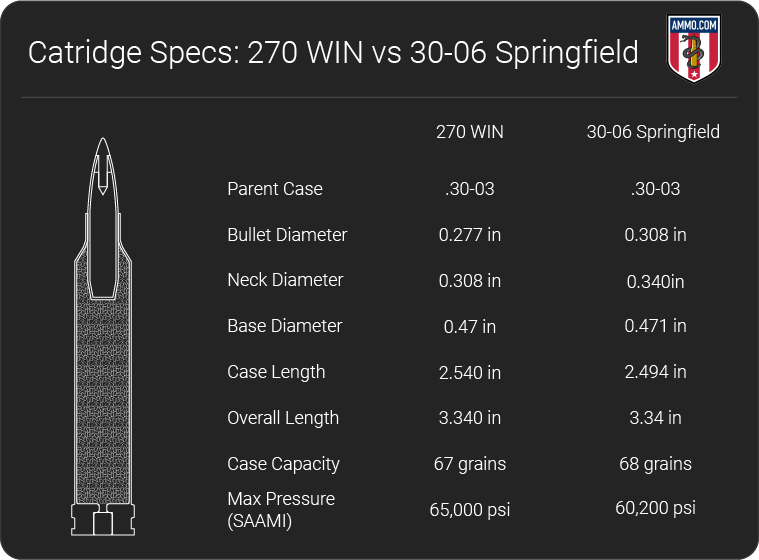
The 270 Winchester fires a .277” diameter bullet while its larger brother fires a .308” diameter bullet. Simply put, the 270 Winchester is a necked-down version of the .30-03.
As the case capacity between the two is virtually identical, it makes sense that the 270 Win would have a higher maximum pressure as we are shooting smaller projectiles with the same powder charge. This will naturally lead to higher pressures.
Recoil
Recoil impulse is always something to consider when selecting which caliber you want for your new hunting rifle.
As the case capacity for both the 270 Win and the 30-06 is nearly identical, felt recoil energy is going to be dependent on two factors: rifle weight and bullet weight.
A heavier rifle will typically impart less recoil onto your shoulder, the same can be said for lighter-weight bullets.
Internet forums will often state that recoil is not a huge consideration for big game hunting as the shooter will typically only fire one shot. Generally, I’d agree. However, there is the occasion where a follow-up shot is needed. In that case, I’d want a cartridge with less recoil to help me get back on target quicker.
When it comes to 30-06 and 270 Winchester, the 30-06 is going to have higher recoil. How much you ask? The difference is not as great as you would think.
On average, the 30-06 will generate 25 ft-lbs of recoil energy while the 270 Winchester will slap your shoulder with 20 ft-lbs force. Although the 270 Win does have less recoil, it’s nothing like a 223 Rem!
Shooters will often report that the recoil impulse is different between the two cartridges. Hunters will often describe the 270 as having a sharper more defined recoil and the 30-06 having a rolling recoil impulse throughout the firing process.
Although this is not exactly quantifiable, it is a trend you will discover if you like reading shooting forums or talking about rifle cartridges around the fire at deer camp.
Regardless, the 270 Winchester has less recoil energy and will be a better choice for an inexperienced shooter or one with a smaller frame.
Trajectory
Trajectory is how we quantify a bullet’s flight path to its target measured in inches of bullet drop. As a bullet travels downrange, it is constantly being pulled back towards the earth due to gravity. And in terms of long-range shooting, a flatter trajectory is preferred.
Lighter-weight bullets traveling at higher velocity (FPS) will be affected by gravity less as they will reach the target faster than heavier bullets traveling slower.
Therefore, the extremely popular 130 grain bullet offerings for 270 Winchester, like the Hornady 30-06 Ammo SST Superformance or Nosler AccuBond, offer exceptional bullet drop values well past 500 yards. On average, a 130 grain bullet fired from a 270 Win will have dropped about -38” at 500 yards, which is better than the 6.5 Creedmoor and on par with the 300 Win Mag at that distance.
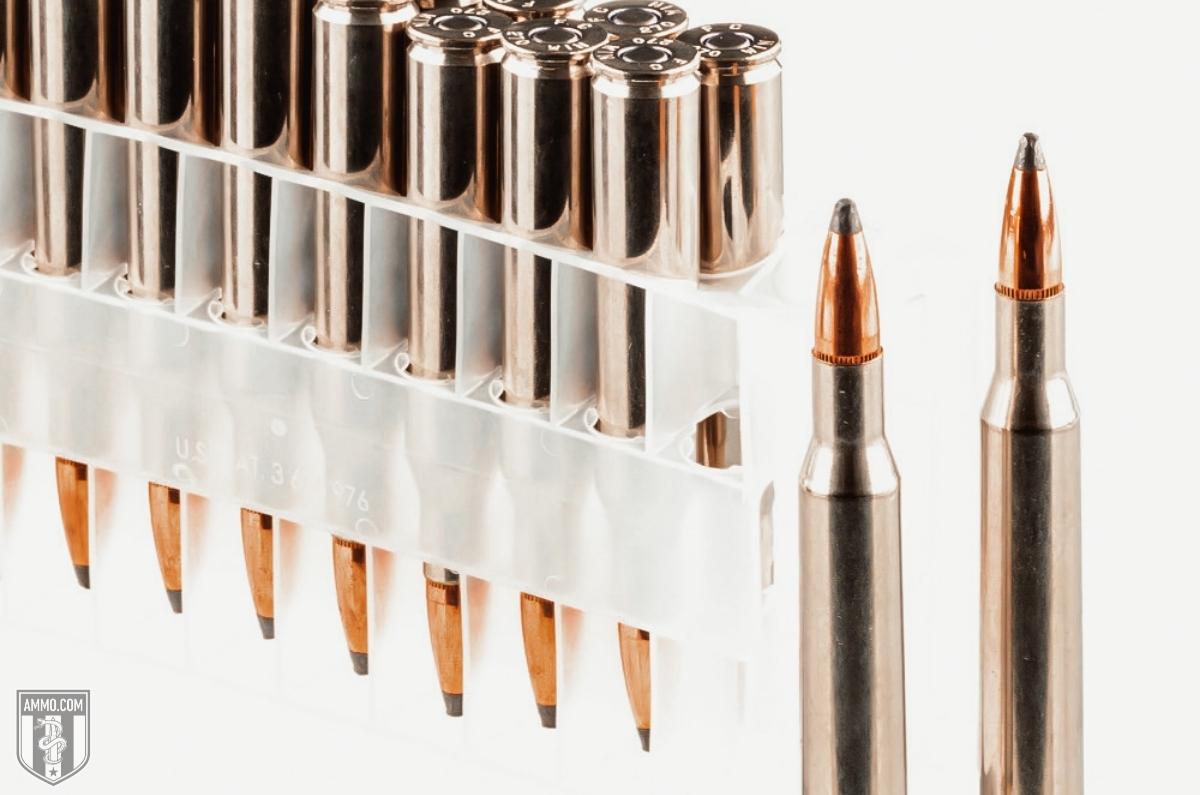
Although the 30-06 fires a heavier bullet, its trajectory numbers are still very reasonable for the power that it brings to the field. Take for example your typical 150 grain Nosler Partition having a bullet drop of -42” at 500 yards, that’s still very respectable.
The simple truth is that the trajectories of both hunting cartridges are extremely similar. However, the 270 Winchester will be slightly better as it generally fires lighter bullets at a higher FPS.
Accuracy
Accuracy is an extremely difficult metric to quantify as it is primarily dependent on the rifle used and the ability of the shooter.
There’s no denying that some handloads will be more accurate than others, however, accuracy is most often a measure of a shooter’s skill as opposed to the cartridge itself. Both the 270 Win and 30-06 are capable of sub-MOA groups with proper handloads or match-grade factory loads.
Some shooters will report having better accuracy with a 270 Win, most likely due to less felt recoil energy and favorable trajectory.
However, with all things being equal, there should be no difference in accuracy between these two cartridges.
To learn more, check out our recommendations for the best 30-06 ammo for accuracy.
Ballistic Coefficient
Ballistic Coefficient (BC) is a numerical representation of how well a bullet resists wind and air resistance. It’s a measure of how aerodynamic a bullet is, a high BC is preferred and means the bullet will buck the wind easier.
The way a BC is calculated is rather complicated and irrelevant for this article, however, heavier bullets will typically have a higher ballistic coefficient.
Overall, both the 270 Win and 30-06 have high BC’s and resist wind drift extremely well. Both cartridges have long, slender bullets which help cut down on wind drag.
Furthermore, the added weight from 180 grain bullets available in 30-06 makes it more difficult for the wind to force the bullet off target.
There is not an appreciable difference in BC between these two cartridges. On average, the 30-06 will have slightly higher BCs than the 270 Win, but we are really splitting hairs in this instance.
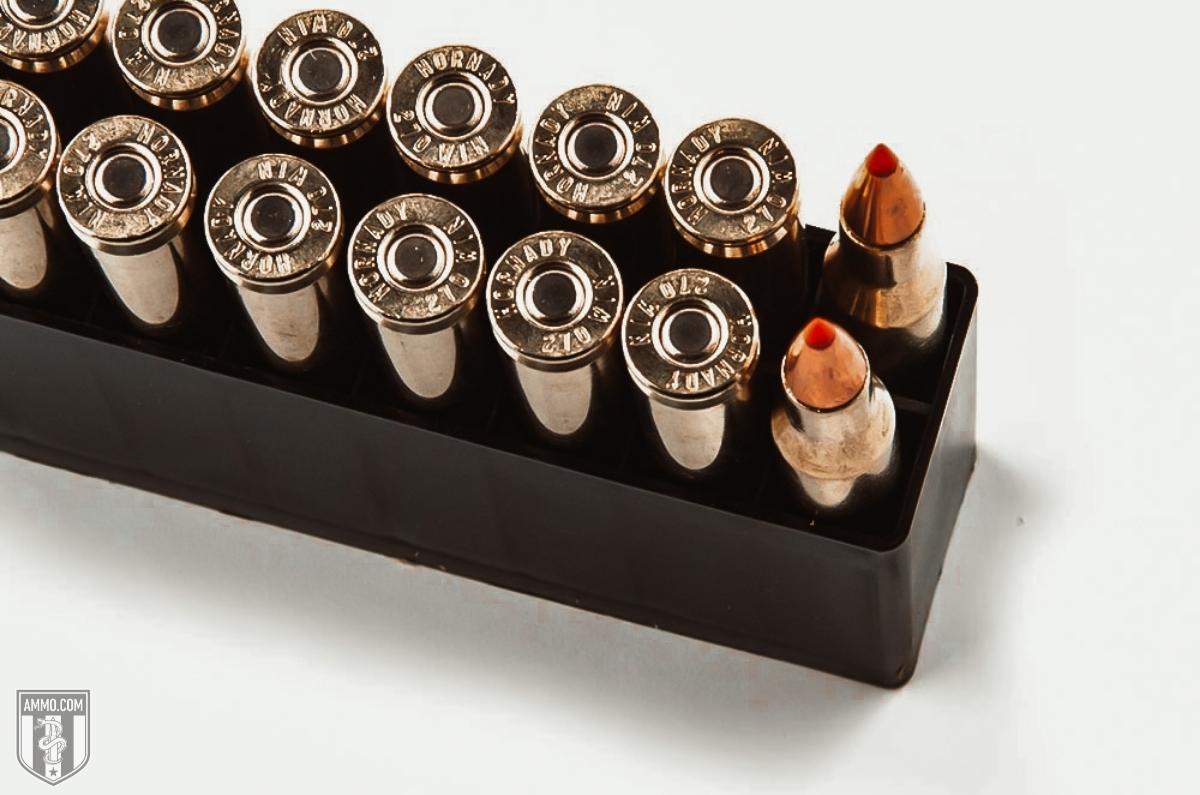
It’s unlikely most shooters will be able to ascertain the difference in ballistic coefficient between 30-06 and 270 Win, therefore we are going to call this one a tie.
Sectional Density
Sectional Density (SD) is the measure of how well a bullet penetrates a target. This is extremely important when hunting big game, as you need a bullet that can punch through thick hide, bone, and sinew.
Sectional density is calculated by comparing the bullet weight and the bullet diameter, the higher the number the more effective it will be at penetrating a target. The higher the SD the deeper the bullet will penetrate the target.
Just like for ballistic coefficient, there is not much difference between the 30-06 and the 270 Win.
The reason for this is the difference in bullet design and velocity between the two. Although the 270 Win is firing a smaller bullet, the bullet’s energy is localized into a smaller area increasing penetration. In contrast, the heavier 30-06 uses brute force to penetrate deep into the target.
In the end, you’ll get similar penetration for both the 270 Win and the 30-06, to the point that I doubt any hunter will be able to tell the difference between the two.
Hunting
Now we come to the crux of the debate, determining which cartridge is the better option for hunting.
The simple answer is: It depends.
The consensus across North American and European hunters is that the 270 Winchester is better suited for varmint hunting and medium-sized game while the 30-06 is preferred for medium to larger game.
There is some truth to this belief.
The more common and lighter 120 and 130 grain weigh bullets offered for the 270 Win makes it ideal for taking care of smaller critters that terrorize your property like groundhogs, prairie dogs, or coyotes. These bullets offer a flatter trajectory and hit hard, making short work of any varmint in your sights.
The heavier bullet weights for .270 also do extremely well against whitetail, mule deer, antelope, and feral hogs. A 150 grain Nosler Partition or Barnes TSX will have no issue putting meat in your freezer this hunting season.
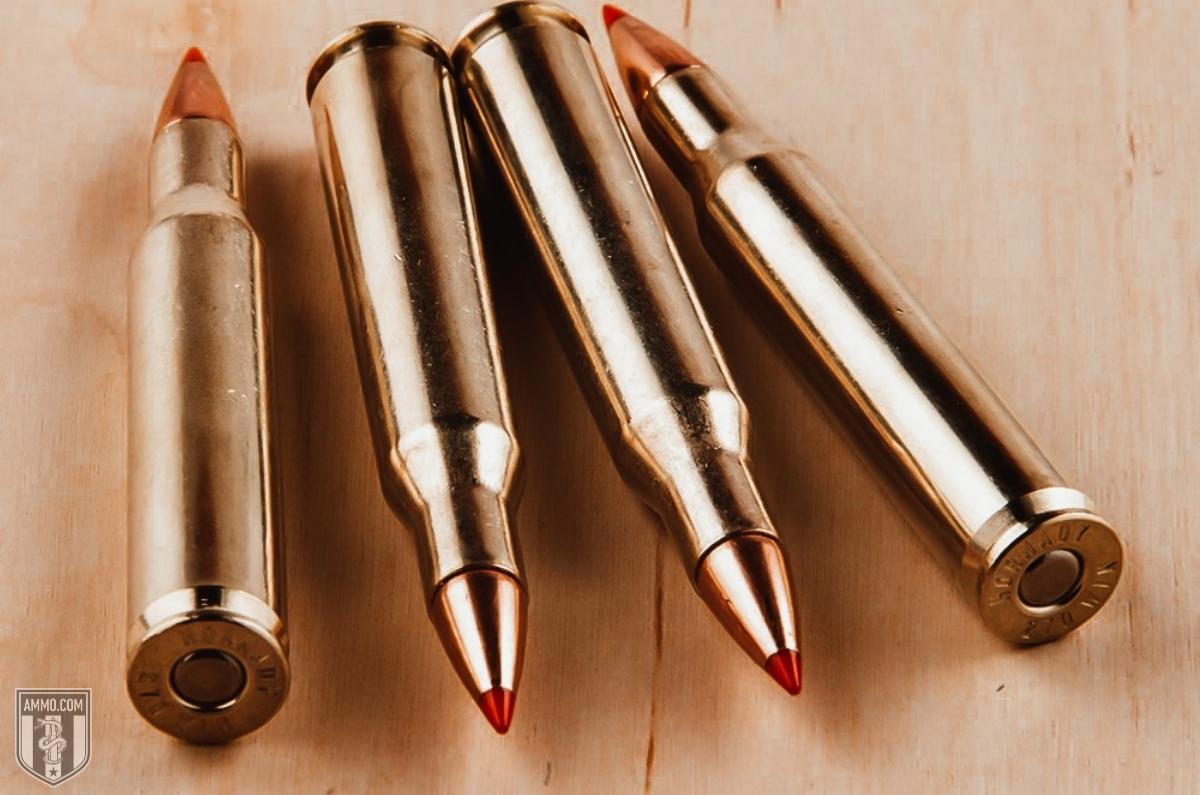
But what about larger game that is running around North America, is the 270 Win suited for this role as well?
There is a long-held belief that the 270 is insufficient for elk, perpetuated by tale tales around the campfire or armchair hunting forum gurus who spend more time typing than they do in the woods.
The simple truth is that with proper shot placement and bullet selection, a 270 Win is more than enough to take down an elk. However, I would suggest that this is the upper limit for the 270 Winchester, as when we get into even larger game like black bear, caribou, and moose, you’re going to need something with a bit more power.
Enter the 30-06 Springfield.
Though the 270 is a very versatile cartridge, when you need to take down the largest North American game the 30-06 is hard to beat.
With its heavy-hitting 220 grain factory loads like Hornady InterLock or the Barnes Vor-TX Long Range will make short work of caribou and black bears as they hit hard with excellent penetration and expansion.
It’s well established that the 30-06 is the better choice for large game, but does this mean it can’t play in the varmint arena as well? Decidedly not.
Although not as popular, you can find 30-06 loads for 125 grain weight bullets that would have zero issues taking care of varmints on your property.
The well-known Field and Stream columnist, Jack O’Connor, who was perhaps the biggest proponent of the 270 Winchester, openly admitted that the 30-06 Springfield is the more versatile cartridge.
And for good reason! With its wider range of bullet weights to choose from, the 30-06 offers shooters the versatility to take down varmints and bears alike.
The 30-06 can also be utilized on an African safari as well. Though I’d not recommend it, the 30-06 has been used to take down an elephant, however, a 375 Weatherby Magnum might be a better choice for the largest of African game.
Although many hunters might argue that the flatter shooting 270 Winchester is better suited for varmints, there’s no reason that a 30-06 can’t be used for the same purpose.
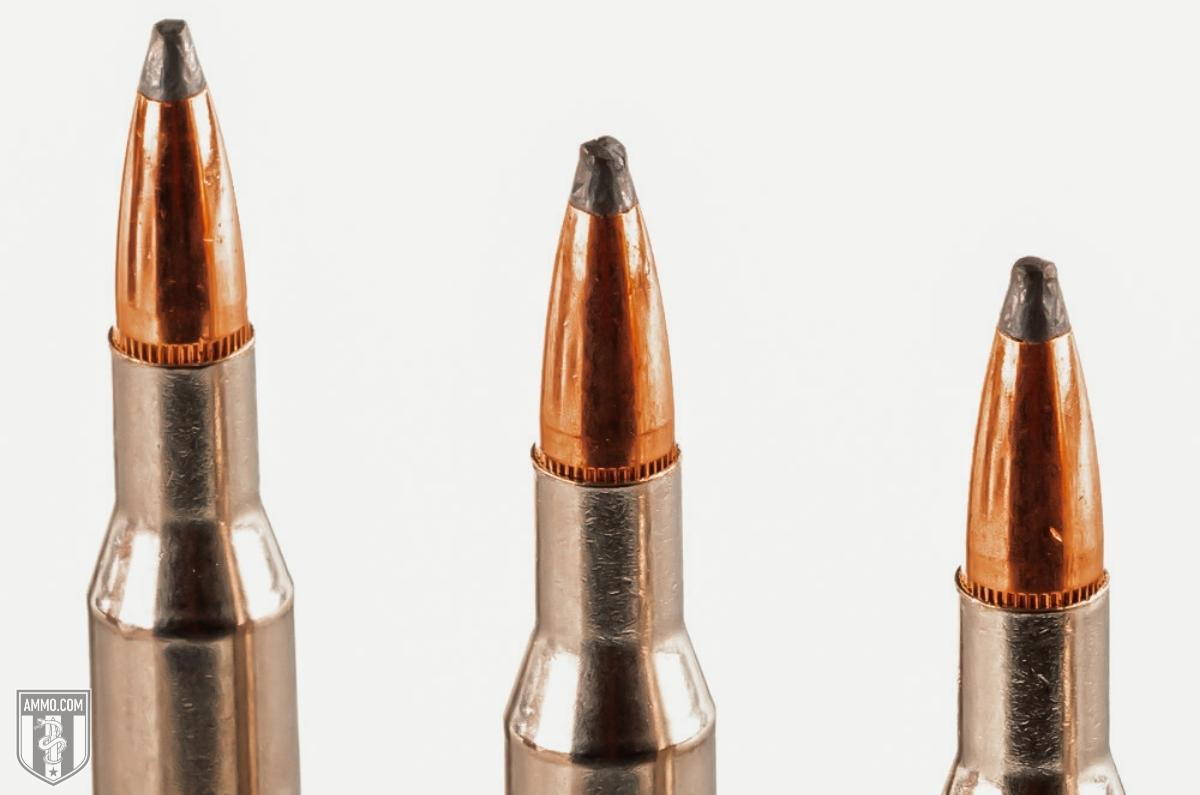
To summarize, if your hunting aspirations end at hunting North American elk, then there’s no reason to shy away from a 270 Winchester as it can achieve everything you desire with less felt recoil and a flatter trajectory.
However, if you believe there is the possibility that you’ll go on safari one day to the African plains or you’ve always wanted to go to Alaska to take down a caribou, then the 30-06 Springfield is clearly the better choice as it offers you the versatility you need to take down a wide variety of larger game at long range.
Ammo and Rifle Availability
There is no shortage of ammo options or bolt action rifles when it comes to 270 Win and 30-06.
All the major firearm manufacturers like Remington, Winchester, Savage, Ruger, and Weatherby make rifles chambered in both calibers.
However, as the 30-06 has been around longer and it was also a military cartridge, you will find more rifle options available for 30-06 with some semi-auto options also.
As far as price is concerned, factory new rifles will be equal in price regardless of caliber for most manufacturers. However, as the 30-06 was a military cartridge, there are many surplus rifle options on the secondary market if you don’t want to get the newest, tricked-out long-range hunting rifle and prefer the more classic look.
The same situation is true for ammo. There are simply more factory loads for 30-06 than 270 Winchester as the 30-06 has been around longer as was heavily utilized by the US military in the early part of the 20th Century.
You won’t lack options if you opt for a 270 Winchester, but the 30-06 just offers more as it has been optimized and improved upon more.
The price between these two cartridges is about equal. For the cheaper practice ammo, you should expect to pay around $1.50/round while the premium hunting ammo will go for about $3/round at the time of writing.
Reloading
If you love reloading as I do, then you’re going to have a wonderful time crafting your perfect long-range handloads for both the 270 Winchester and 30-06 Springfield.
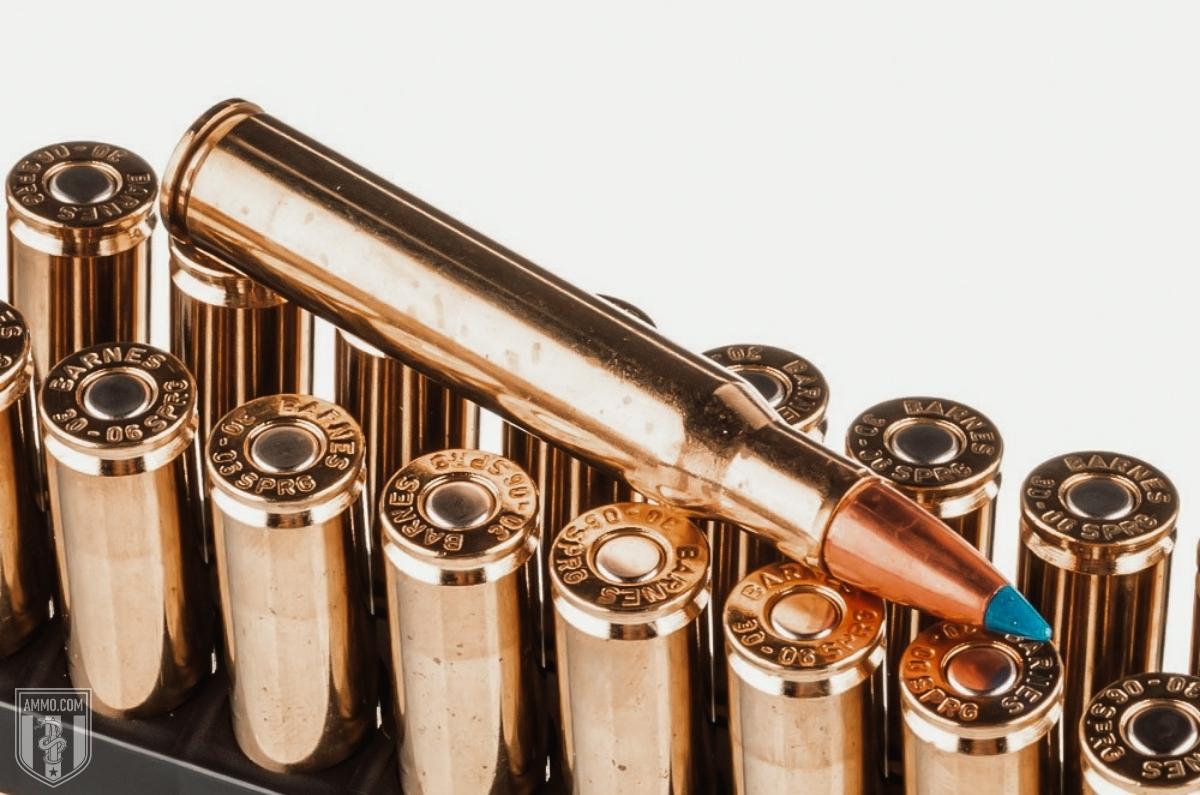
There is a wide range of bullets available for both that you can choose from to work up your perfect hunting or long-range target rounds.
However, as the .277” bullet diameter is not commonly used in other cartridges, the 30-06 will offer you more cross-compatibility in terms of components.
For example, if you reload for 30-06 then you can easily reload for 308 Winchester and 300 Win Mag as they fire the same .308” bullet diameter.
Reloading for either of these great cartridges should be a joy as you’ll have plenty of component choices for both, the 30-06 just offers more compatibility with other 30 caliber cartridges.
.270 vs .30-06 Ballistics
The ballistics tables below offer you the opportunity to check out some of your favorite factory loads for both calibers and determine which will be the most effective for your intended use.
Our team here at Ammo.com has done an excellent job compiling manufacture’s data to give you a wide range of bullet weights to choose from.
.270 Ballistics
Note: This information comes from the manufacturer and is for informational purposes only. The actual ballistics obtained with your firearm can vary considerably from the advertised ballistics. Also, ballistics can vary from lot to lot with the same brand and type load.
.30-06 Ballistics
Note: This information comes from the manufacturer and is for informational purposes only. The actual ballistics obtained with your firearm can vary considerably from the advertised ballistics. Also, ballistics can vary from lot to lot with the same brand and type load.
.270 Win History: Winchester’s All-Star Hunting Cartridge
As with many cartridges in the 20th Century, the 270 Winchester got its roots from the 30-06 Springfield.
After the Spanish-American War, the United States Military began the process of creating a new cartridge after seeing the deadly efficiency of the 7x57mm Mauser round in the hands of Spanish troops.
The round that was eventually selected is the lauded 30-06 Springfield which also came with the Army’s new bolt action rifle, the 1903 Springfield. The 30-06 Springfield was designed to fire 150gr bullets at 2,700 fps (feet per second).
The 30-06 was wildly successful and led to wildcatters using the 30-06 as a parent case to make new cartridges. A wildcatter is someone who makes their own custom cartridges that are not commercially available to achieve a specific purpose.
Many wildcatters live true to my personal motto, “Go big or stay home”, and necked up the 30-06 to accept a larger caliber bullet. Two wildcat cartridges that eventually became commercially available were the .35 Whelen and the .400 Whelen.
Winchester decided to take a page out of the Mauser Playbook and necked down the cartridge to accept a smaller diameter bullet that would be fired at a faster muzzle velocity.
The .270 Win was introduced in 1925 and is a necked-down version of the 30-03, the progenitor of the 30-06, to accept a 0.277” diameter bullet.
The original offering of the 270 Winchester came in their Winchester Model 54 bolt action rifle and was designed to fire 130 grain bullets at a muzzle velocity of 3,140 fps.
The decision to use a 0.277” diameter bullet was a somewhat perplexing decision by Winchester as 270 was a much more obscure caliber at the time. By comparison, the much more popular 0.284” diameter bullet was used in the 7x57mm Mauser, 280 Remington, 7mm Remington Magnum, and 7mm-08.
This decision by Winchester meant that the 270 Win was not an immediate commercial powerhouse like the 30-06 and lived in relative obscurity for many years.
Even today there are only a few cartridges that utilize the 0.277” in diameter bullet, the most popular being the 270 Winchester Short Magnum (270 WSM), the 270 Weatherby Magnum, and the 6.8 Remington SPC.
It’s been theorized that Winchester wanted to stay away from popular European bullet designs like the 6.5mm Swiss (and more recently the 6.5 Creedmoor) and 7mm Mauser to make a cartridge that was truly American and wouldn’t be viewed as fashion-drafting off of other gunsmiths’ work.
Regardless of their reasoning, it wasn’t until after WWII that Jack O’Connor began to expound upon his unabashed love affair with the 270 Winchester in Outdoor Life magazine that the cartridge really started to see its popularity grow.
O’Connor had been using the 270 Win in many of his big game hunts and this is what is primarily credited with the rise in popularity of the cartridge.
Since then, the 270 Win has been steadily growing more and more in popularity due to its flatter trajectory, long-range shooting capability, and versatility as a hunting round being able to ethically harvest game animals from groundhogs to elk.
With the ability to shoot lighter bullets from 120gr for small game up to a heavier bullet at 160gr for large game, the 270 Winchester allows you to have ammo versatility that other cartridges only dream about.
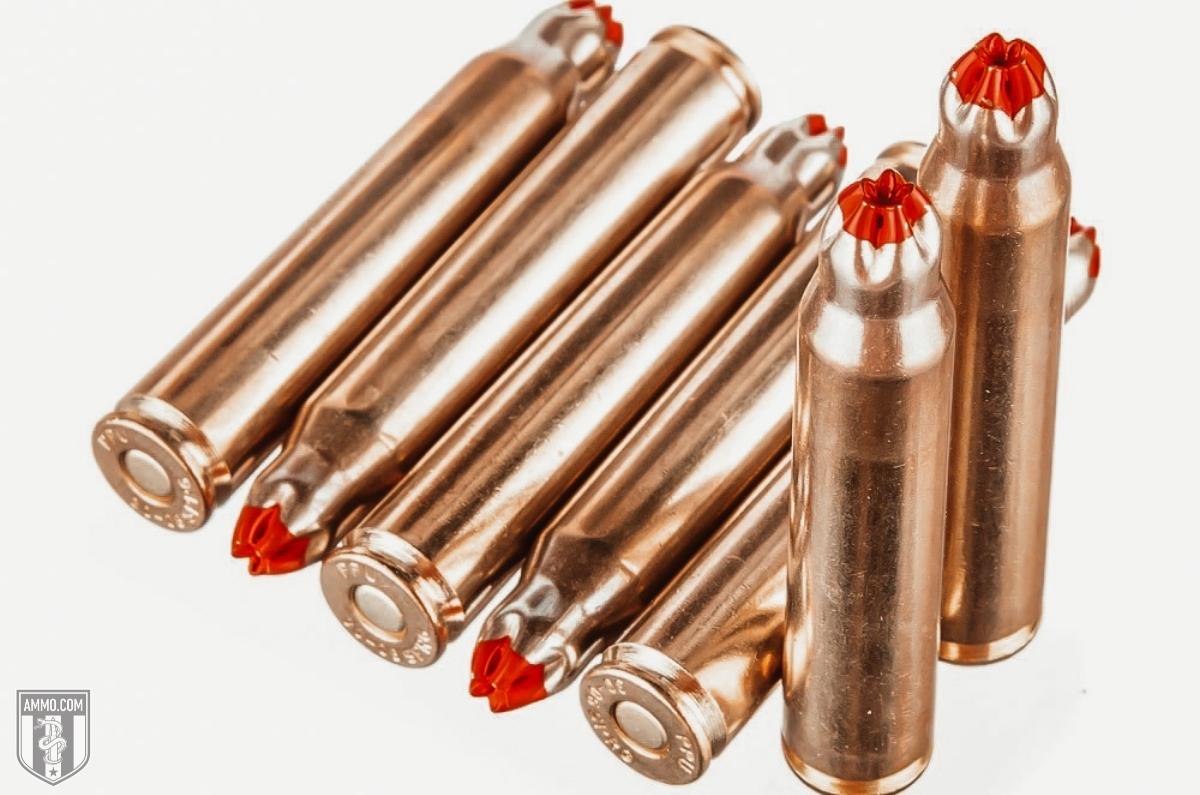
30-06 Springfield History: America’s Beloved 30-Caliber Rifle Cartridge
America’s love affair with 30 caliber rifle rounds began back in the Wild West with the introduction of the 30-30 Winchester. Later, the U.S. Army developed the 30-40 Krag to be its smokeless powder replacement for the .45-70 Government.
Around 1901, the U.S. Military started developing a new cartridge to replace the 30-40 Krag. The American Expeditionary Forces were very familiar with the effectiveness of the 7mm Mauser cartridge, suffering staggering losses at the hands of the 1893 Mauser at the Battle of Santiago during the Spanish-American War in Cuba.
It was clear that the 30-40 Krag was an inferior design compared to the Spanish Mausers and the military did not want to fall behind with advancements in bolt action rifle and cartridge technology.
At the time, heavier bullet weights were thought to be the superior ballistic choice. Therefore, the initial design submitted in 1903 used the same 220-grain round-nose bullets fired by the 30-40 Krag.
The 30-03 Springfield was patterned after the famous 7x57mm Mauser cartridge, sharing identical case head dimensions.
However, it didn’t take long for the American generals to take note that multiple European nations were favoring higher velocity, Spitzer (pointed) projectiles in their new bolt action rifles.
Not wanting to get left behind, the U.S. Military was quick to adopt a similar design. In 1906, the new cartridge that fired a Spitzer flat-based 150 grain bullet was submitted and accepted. The original design for 30-06 Springfield achieved a muzzle velocity of 2,700 fps, packed 2,429 ft lbs of muzzle energy, and a maximum pressure of 60,200 psi (SAAMI specs).
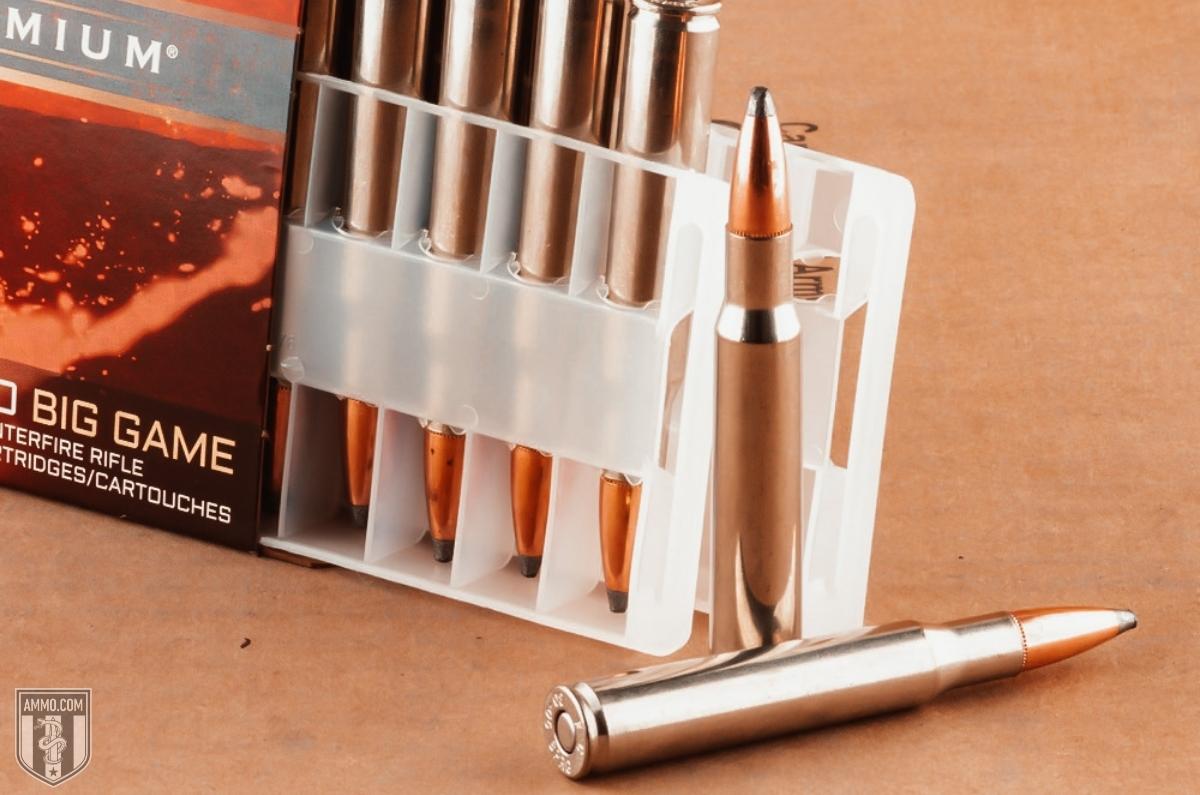
And thus the 30-06 Springfield was born. The “30” designates the bullet caliber and the “06” (pronounced: aught six) designates the year of its adoption. The 30-06 Springfield can also be referred to as the 3006 Springfield or just simply as 30-06.
Although the 30-06 initially gained popularity with the Army’s new bolt action rifle, the 1903 Springfield (which looked surprisingly like a Mauser…coincidence I’m sure), it truly became World Famous with the introduction of the semi-auto M1 Garand during World War II.
The 30-06 Springfield was the ammo carried by our soldiers who fought in the trenches on the Western Front in World War I, stormed the beaches of Normandy in WWII, assaulted the 38th Parallel in Korea, and saw limited use in the jungles of Vietnam.
Not only has the 30-06 seen massive success on the battlefield, but it has seen immense commercial success in the civilian market as well. Big game hunters loved the amazing terminal ballistics and long-range that the 30-06 offered while having a recoil impulse that is not punishing to the shoulder.
Since its introduction to the civilian market, the 30-06 has been the de facto hunting cartridge that all other hunting caliber cartridges are measured against. The most popular loadings for 30-06 range between 150 and 180 gr bullet weights with the 180 grain bullet being the most popular with big game hunters. However, specialty ammo can go as low as 110-grain bullets and as high as 220 grain projectiles.
The 30-06 Springfield is incredibly versatile, allowing hunters to customize their loads depending on the game animals they are stalking. Lighter bullet weights like the 150 and 165 gr Nosler Partition or Accubond can be utilized for whitetail or mule deer, while you should have good luck with the 200 gr Barnes TSX when you have a perfect broadside shot lined up on that trophy elk in your crosshairs.
The 30-06 is truly a rifle cartridge of American legend and has survived the test of time, as it is still one of the most popular hunting rounds in the world over 100 years later.
Final Shots: 270 vs 30-06
When it comes to big game hunting, it’s hard to beat these two great cartridges. The 270 Winchester offers a flatter trajectory like the 300 Win Mag as well as the power and penetration necessary to take down whitetail, antelope, and elk all with less recoil.
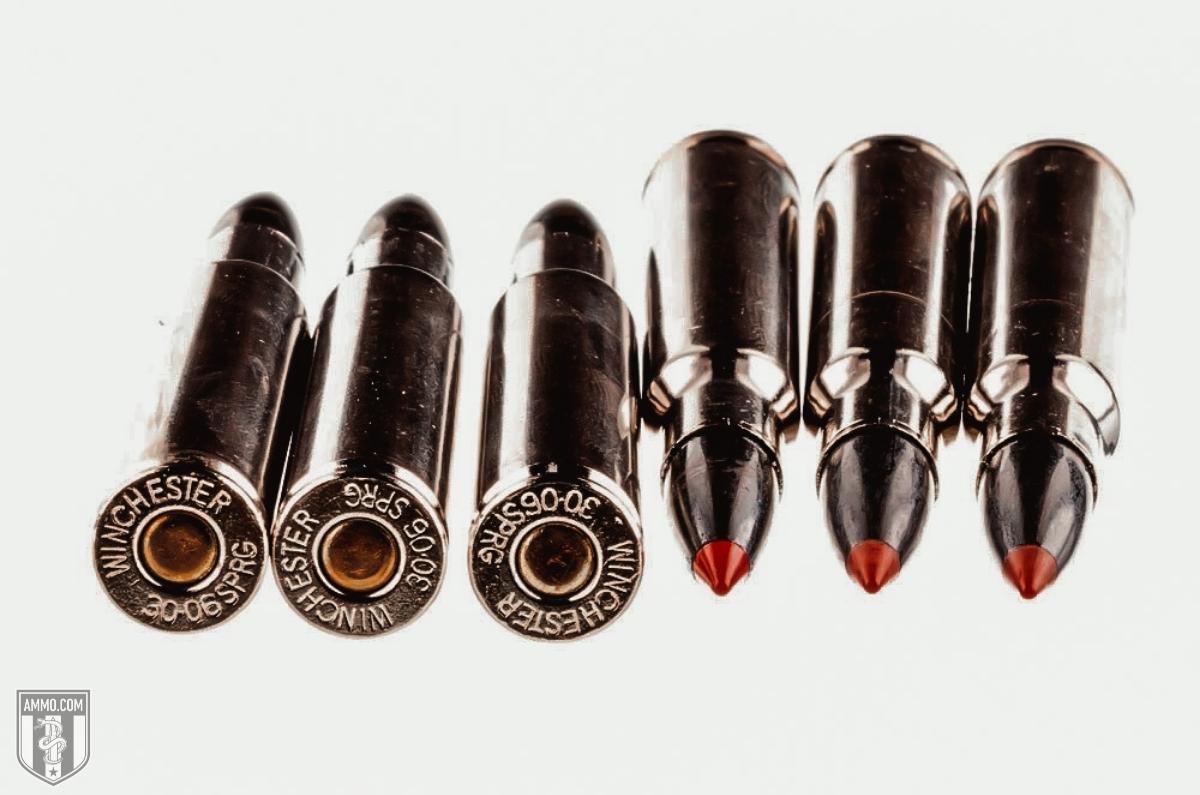
The 30-06 Springfield is a tried-and-true long-range hunting round that has tackled all different varieties of larger game across North American and the African savannah. Black bears and elk stand no chance against the hard-hitting 30-caliber warhorse and many shooters prefer the heavier bullets the 30-06 can handle.
Which caliber is right for you depends on what you plan to hunt.
If you have zero aspirations of taking on black bears or moose, then the 270 Winchester is the better option as it is an extremely capable long-range cartridge that is flatter shooting and has less recoil but does not sacrifice on terminal ballistics.
If you plan to go hunting in Alaska or Africa in the future, the 30-06 Springfield will ensure these large game animals end up in your freezer or wall and not lost in the bush.
Regardless of which caliber you choose, the most important aspect of big game hunting is shot placement to make sure that the animal does not unnecessarily suffer.
Make sure you stock up on ammo here at Ammo.com as hunting season is quickly approaching and it’s high time you dusted off your rifle and got to the range for some practice!











